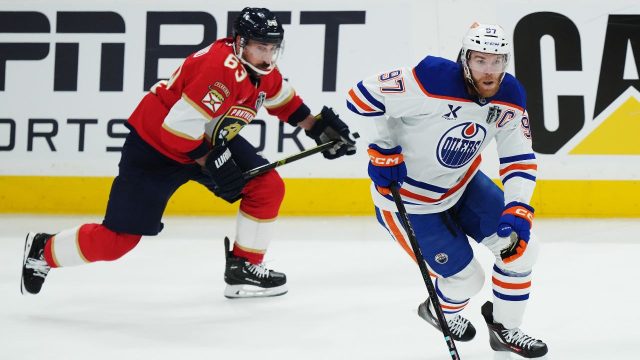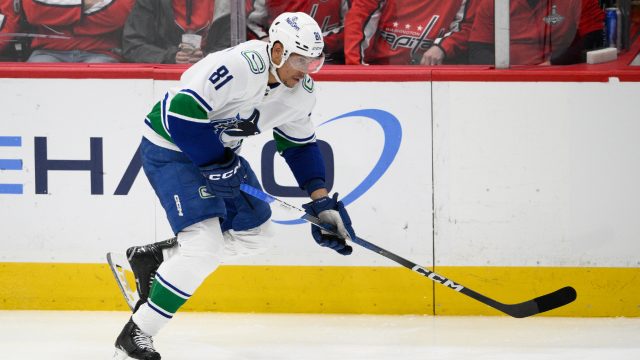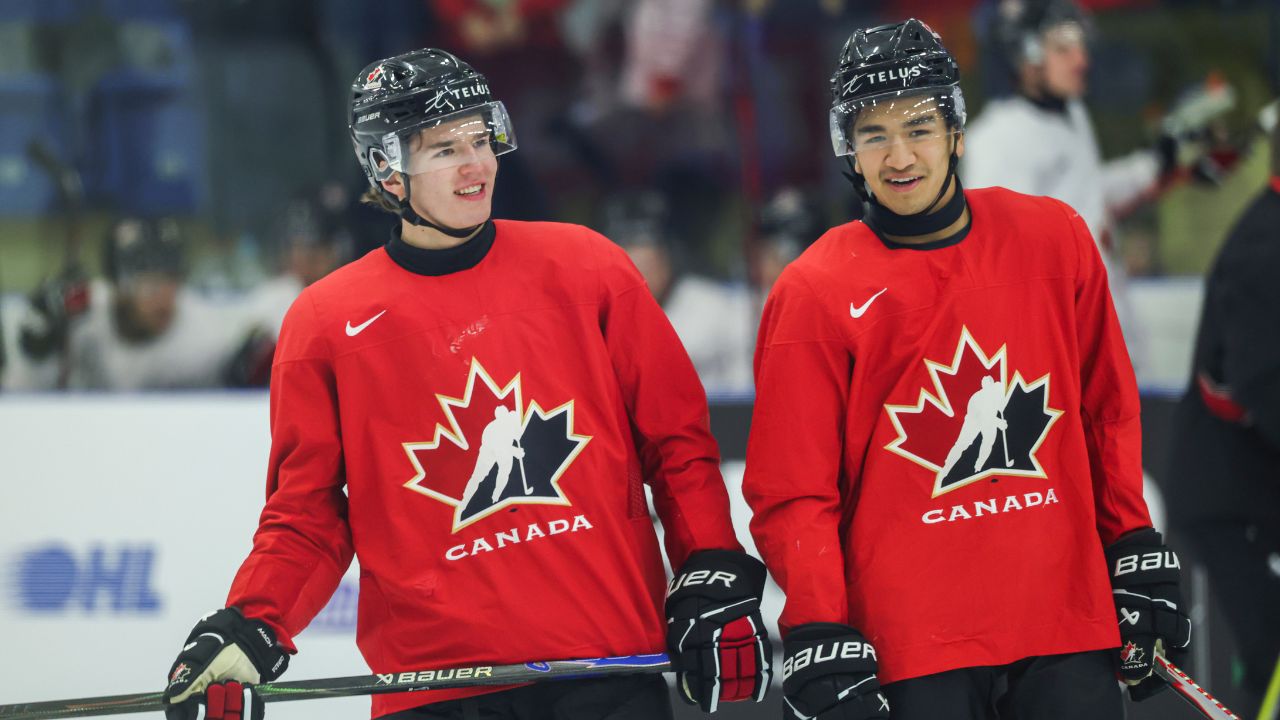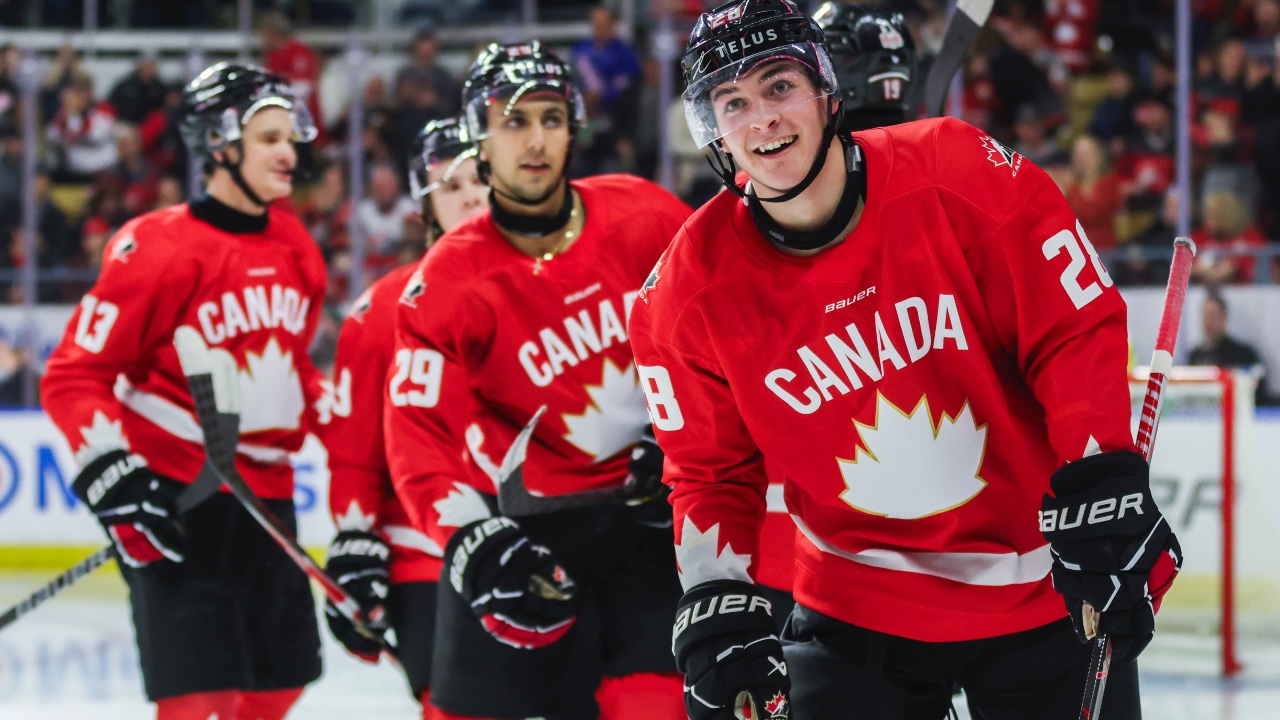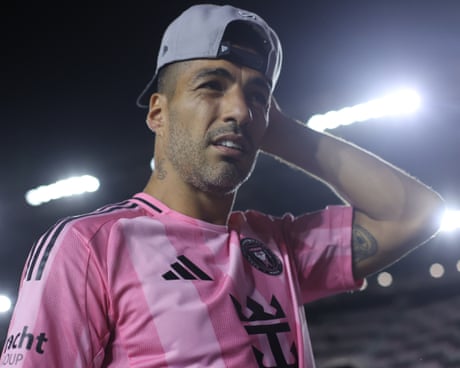
The Friday Four is a collection of thoughts and information on some intriguing storylines from around the NHL. On deck this week:
• Should Schaefer play with the Isles in 2025-26?
• How Tkachuk’s potential absence impacts Panthers’ cap situation
• Wild, Rossi remain in contract stalemate
• What do the Leafs do with Robertson?
Matthew Schaefer, New York Islanders
If Matthew Schaefer has his way, he’ll be in the opening-night lineup when the New York Islanders take on the Pittsburgh Penguins to kickoff their season in October.
This year’s first-overall pick has remained steadfast in his desire to make the Islanders out of training camp, hoping to play in the NHL immediately.
“Obviously, it’s something I’ve wanted to do my whole life and to do it your first year — there’s still a lot of work, but that was my dream and I want to play in the NHL this season,” Schaefer said earlier this month, when he signed his entry-level contract. “I wanted to really badly. I know there’s going to be a lot of hard work that comes with it, but I think I’m ready.”
That’s absolutely the attitude Schaefer should have. The Isles could opt to send Schaefer back to junior for another season, but it’s his job to make that decision as difficult as possible. He’s clearly an elite talent that is almost undoubtedly headed for a long NHL career, though New York will ultimately decide when that journey begins. They’ll want to put him in the best possible position to succeed and do what’s optimal for his development.
As mature as Schaefer is both on and off the ice, though, it’s easy to forget that he still won’t turn 18 until next month. The list of defenders to crack the NHL at that age and not look out of place are few and far between. Schaefer also played just 17 games last year for the Erie Otters of the OHL and had his World Junior Hockey Championship cut short because of injury. It wouldn’t be the worst idea to have him go back and dominate for a full season in junior and play a bunch of the best players at his age group at the world juniors. He could join the Isles for the 2026-27 campaign full of confidence.
It’s also important to consider that it’s much more challenging for a defender to acclimate himself to the NHL than a forward. You can limit a forward’s defensive responsibilities and put them in favourable offensive situations to help boost their confidence, but it’s harder to shelter a blue liner. Inevitably, you’re going to get caught out in situations where players like Connor McDavid, Nikita Kucherov, David Pastrnak and Nathan MacKinnon are barrelling down on you. That’s a very unenviable task for an 18-year-old rookie.
That said, Schaefer could simply force his way into the lineup given the lack of depth on the Isles defence corps. After trading away Noah Dobson, New York now boasts Alex Romanov, Adam Pelech, Ryan Pulock, Scott Mayfield, Tony DeAngelo and Adam Boqvist on the blue line. It’s not unreasonable to think Schaefer could outplay someone in training camp with an impressive showing and even work his way into the top four.
You may remember a similar situation happened with Drew Doughty when he broke into the league at 18. The Los Angeles Kings may not have been thinking Doughty would make an impact so quickly, but it was soon evident that he was one of their best six options on the back end that season and he ended up playing in 81 games. Doughty never looked back and has been the backbone of the Kings defence ever since.
The other thing to consider is that the Isles are not in as bad of shape as some other recent teams that just had a first-overall pick. They were a .500 squad last season and aren’t necessarily heading for a few years in the league’s basement before trying to get back on course. Even with the loss of Dobson and Brock Nelson, New York still has players like Mathew Barzal, Bo Horvat and perhaps most importantly, Ilya Sorokin in the fold. The Metropolitan division is also arguably the weakest at the moment, so it’s possible the Isles could get back into the playoff race this season with Schaefer’s help.
At the end of the day this decision is likely going to be Schaefer’s. Not by his conviction that he’s ready for the NHL but instead by what he shows on the ice in training camp and in the early part of the season. If he won’t be denied and proves he’s one of the best six options on New York’s blue line, the Islanders would be foolish not to bank on Schaefer immediately.
Matthew Tkachuk, Florida Panthers
If you looked just at Matthew Tkachuk’s playoff numbers this spring, which included 23 points in 23 games, you wouldn’t know he was dealing with a significant injury. Tkachuk, though, was clearly banged-up and is now contemplating his best path forward to get back to 100 per cent.
The Florida Panthers forward has a torn adductor muscle and a sports hernia injury and is still debating on surgery that would sideline him for the first few months of the season. Although losing Tkachuk isn’t ideal for the Panthers, the silver lining is it would help their cap situation or at the very least, buy them some time.
Florida did what many thought was impossible this off-season by re-signing all three of Sam Bennett, Brad Marchand and Aaron Ekblad, but they are almost $4 million over the cap. That’s a problem that can be easily solved if Tkachuk starts the year on LTIR and his $9.5-million cap hit is freed up. It gives the Panthers more room to manoeuvre with to start the year and they wouldn’t have to trade anyone off their roster. There were rumblings this summer that maybe Evan Rodrigues could be a trade candidate to clear up space, as he has a cap hit of $3 million for the next two seasons, but I’m sure Florida would like to avoid that if possible.
When Tkachuk announced he was considering surgery last week, there were a number of skeptics that commented on how this decision would be mainly to help the Panthers tight cap situation. Some even suggested Tkachuk could go the same route Nikita Kucherov did a few years ago and sit out the entire regular season, only to return for the playoffs. However, the flaw with that theory is that the Olympics are in February and there’s no way Tkachuk would sit out if he can get himself healthy. If the 4 Nations tournament was any indication, the Tkachuk brothers aren’t going to miss a chance to wreak havoc in another chapter of the Canada-U.S. rivalry.
We’ve reached the middle of August and there are still a handful of RFAs who remain unsigned. One of the more notable names on that list is Marco Rossi, who is at an impasse with the Minnesota Wild over his next contract.
The 23-year-old is likely hoping for a long-term deal with a significant AAV after a 60-point campaign, but the Wild may have other ideas. Minnesota clearly isn’t as convinced about his value, as they bumped Rossi down to the fourth line in the post-season and cut his ice time by seven minutes per game. There is still plenty of time before the season gets underway, though this negotiation feels like it won’t be settled any time soon.
With training camp only about a month away, it raises the question as to whether Rossi will be a participant. We’ve seen some other talented RFAs in recent years miss significant chunks of training camp while waiting to hammer out a new deal and it ultimately ended up being to their detriment. Last year, Boston Bruins goaltender Jeremy Swayman missed the entirety of camp while waiting for a new deal and he never fully got up to speed. Swayman started slow and couldn’t catch up, finishing with an .892 save percentage and a goals-against average well over 3.00.
Back in 2018, William Nylander didn’t settle his new deal until December and ended up having a nightmare campaign. He recorded just seven goals and 27 points in 54 games for what was easily the worst statistical season of his career.
Rossi and the Wild still have time and options on their side. If they can’t agree on a long-term pact, maybe a bridge deal is in order to give Rossi more runway to solidify himself as a top-end talent. However this gets solved, it’s in the best interest of player and team that Rossi not miss a substantial portion of training camp or any regular-season games. If he does, Rossi could be trying to jump on a moving train when everything eventually gets squared away.
Nick Robertson, Toronto Maple Leafs
The Toronto Maple Leafs and Nick Robertson avoided arbitration this summer, agreeing to a one-year, $1.82-million deal. But now what?
Robertson has been the subject of frequent trade discussions in the past and even requested a trade at one point. Things quieted down before the start of last season, though, as Robertson remained with the team and settled into a familiar pattern of playing in the bottom six, scoring at a decent rate but then not being trusted in the playoffs. The Leafs forward played in just three of Toronto’s 13 post-season games last spring.
Now Toronto essentially faces two choices when it comes to Robertson. Move him for an asset or continue to use him in a sheltered offensive role. If the Leafs decide to keep him for another season, there are some reasons that could make sense. The team is losing a lot of offence with Mitch Marner’s departure and the only way to replace it is by committee. New addition Matias Maccelli certainly has some offensive talent, but it’s going to take a lot more than that. Nic Roy and Dakota Joshua are nice pieces to improve the bottom six, though it remains to be seen how much offence they can produce.
Robertson scored 14 goals in 56 games in 2023-24 and then 15 goals in 69 games last season, which works out to a 20-goal and 18-goal pace, respectively. Not phenomenal numbers but nothing to sneeze at either for a team that needs secondary scoring. The question is, how impactful were those goals? Robertson scored 11 of his 15 goals last season versus non-playoff teams and his only post-season tally came in garbage time in a blowout against the Florida Panthers.
That’s not to say you should discount Robertson’s production entirely, but he ultimately may end up having more value as a trade chip to the Maple Leafs. It’s hard to imagine Robertson, given his lack of size and physicality, working his way into head coach Craig Berube’s list of trusted players. Another team may be comfortable giving Robertson a look in the top six and a bigger opportunity. Plus, the Leafs have 14 NHL forwards on the roster and that’s not including Easton Cowan, who figures to compete for a spot during training camp. They’ll have to ship at least one or two bodies out eventually and Robertson, whether on his own or part of a package, figures to bring back a better return than would a Calle Jarnkrok or David Kampf, let’s say.
The good news for the Leafs is they have flexibility. Robertson’s AAV is very reasonable for his production, especially with the cap going up next season. This also means they don’t necessarily have to rush into a deal and can just keep him if the looks of a trade return aren’t desirable. They can afford to be patient where Robertson is concerned.


